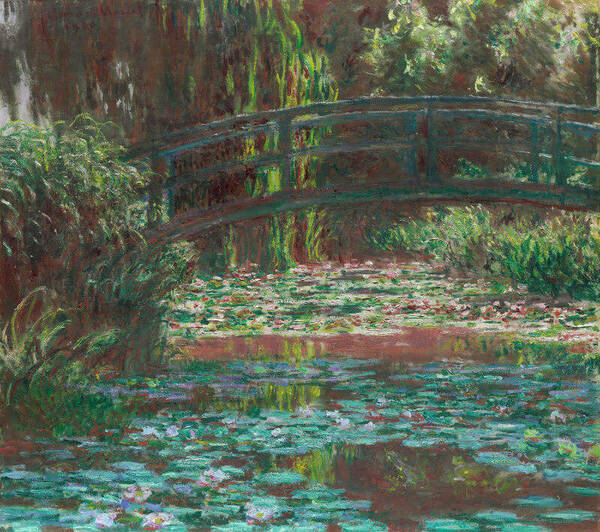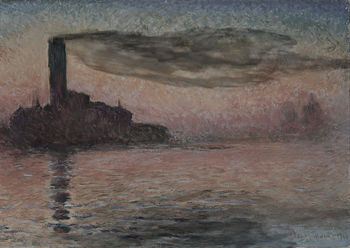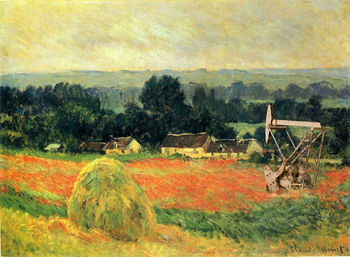
When recent Notre Dame Engineering graduate Josh Erickson was asked to take a creative approach to a project for his Reactive Transport class this past spring, using the works of Claude Monet was a thought that came easily to him.
“Monet focuses a lot on harmony and tranquility, which I’m a big fan of,” said Erickson, who has long been familiar with the famed artist’s paintings.

Students in the class were asked by Professor Diogo Bolster to develop something creative based upon topics related to course, such as water management and climate change. Erickson’s idea used pollution to transform the famous images of natural, untouched landscapes into grim images representing the harsh realities of contamination.
“I always love seeing what students will produce when they unleash their pure creativity and are not restricted by traditional curricular barriers that are common in engineering courses,” said Bolster, associate director of the Environmental Change Initiative and associate professor in the Department of Civil & Environmental Engineering & Earth Sciences at the University of Notre Dame. “Josh’s work was one of many amazing projects that came out last year and one that struck me in a particularly powerful way.”
Using Photoshop, Erickson turned the untouched landscapes into depictions of altered nature that are all too familiar in the world today. He incorporated subtle changes to the tint of the water and added elements, such as a jack pump, to an otherwise freely moving scene.
In one image, he took the serene water of Monet’s Water Lily Pond and transformed it into a dingy body of water filled with trash and a sewage pipe.
“It transformed it from a beautiful, green environment into a swamp, almost. Like a cesspool,” said Erickson in regards to his version of the painting.
Perhaps the most striking are the alterations made to San Giorgio Maggiore at Dusk, by which Erickson morphed the stunning painting of the sun setting over the monastery island into a smoggy, grey industrial cityscape that could easily be a scene taken from the Valley of Ashes.


“Monet’s paintings bring out the general serenity and beauty of nature, and by disrupting that, it kind of makes the viewer a bit uncomfortable and makes them question it.”
While the subject matter of the project itself was not light by any means, Erickson found the slight change of pace to be quite refreshing.
“Engineering majors don’t really get a chance to pursue creative outlets. It’s not something you get to experience much when you’re doing engineering, so it’s nice to recapture that,” said Erickson, who is currently conducting research in the Doudrick Lab on campus.
When asked about what he wants those viewing his images to take away from the project, his response was simple but significant.
“I want to capture an appreciation for things that you may take for granted in your backyard, or when you go to a local state park or something – just appreciating that and not taking certain aspects of your surroundings for granted.”


Originally published by at environmentalchange.nd.edu on July 24, 2017.